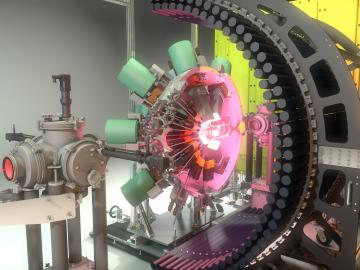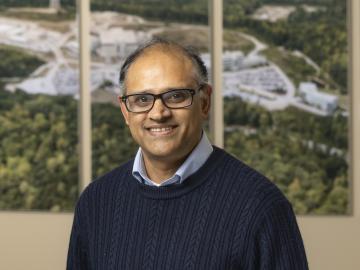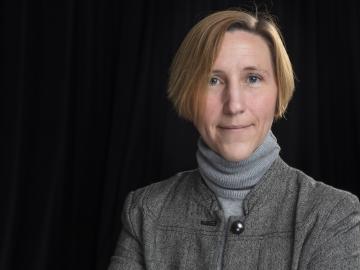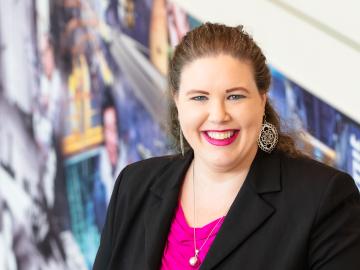
Filter News
Area of Research
- (-) Biology and Environment (27)
- (-) Energy Science (34)
- (-) Materials (73)
- Advanced Manufacturing (1)
- Computational Engineering (1)
- Computer Science (2)
- Fusion and Fission (5)
- Isotope Development and Production (1)
- Isotopes (16)
- Materials Characterization (2)
- Materials for Computing (5)
- Materials Under Extremes (1)
- National Security (19)
- Neutron Science (24)
- Nuclear Science and Technology (6)
- Quantum information Science (1)
- Supercomputing (48)
News Type
News Topics
- (-) Biomedical (12)
- (-) Computer Science (20)
- (-) Cybersecurity (7)
- (-) Isotopes (5)
- (-) Materials (51)
- (-) Mercury (5)
- (-) Microscopy (20)
- (-) Physics (20)
- 3-D Printing/Advanced Manufacturing (44)
- Advanced Reactors (3)
- Artificial Intelligence (7)
- Big Data (5)
- Bioenergy (33)
- Biology (36)
- Biotechnology (8)
- Buildings (14)
- Chemical Sciences (25)
- Clean Water (6)
- Composites (7)
- Coronavirus (14)
- Critical Materials (11)
- Energy Storage (48)
- Environment (57)
- Exascale Computing (3)
- Fossil Energy (1)
- Frontier (2)
- Fusion (4)
- Grid (15)
- High-Performance Computing (13)
- Hydropower (2)
- ITER (1)
- Machine Learning (8)
- Materials Science (49)
- Mathematics (4)
- Molten Salt (2)
- Nanotechnology (26)
- National Security (6)
- Neutron Science (29)
- Nuclear Energy (7)
- Partnerships (11)
- Polymers (12)
- Quantum Computing (2)
- Quantum Science (10)
- Security (5)
- Simulation (9)
- Summit (8)
- Transportation (28)
Media Contacts

Timothy Gray of ORNL led a study that may have revealed an unexpected change in the shape of an atomic nucleus. The surprise finding could affect our understanding of what holds nuclei together, how protons and neutrons interact and how elements form.

Scientist-inventors from ORNL will present seven new technologies during the Technology Innovation Showcase on Friday, July 14, from 8 a.m.–4 p.m. at the Joint Institute for Computational Sciences on ORNL’s campus.

Scientists at ORNL have invented a coating that could dramatically reduce friction in common load-bearing systems with moving parts, from vehicle drive trains to wind

Stan David, retired scientist and Corporate Fellow Emeritus at the Department of Energy’s Oak Ridge National Laboratory, was awarded the Joining and Welding Science Award from the Joining and Welding Research Institute at Osaka University, Japan.

Having passed the midpoint of his career, physicist Mali Balasubramanian was part of a tight-knit team at a premier research facility for X-ray spectroscopy. But then another position opened, at ORNL— one that would take him in a new direction.

Rigoberto Advincula, a renowned scientist at ORNL and professor of Chemical and Biomolecular Engineering at the University of Tennessee, has won the Netzsch North American Thermal Analysis Society Fellows Award for 2023.

When reading the novel Jurassic Park as a teenager, Jerry Parks found the passages about gene sequencing and supercomputers fascinating, but never imagined he might someday pursue such futuristic-sounding science.

Led by Kelly Chipps of ORNL, scientists working in the lab have produced a signature nuclear reaction that occurs on the surface of a neutron star gobbling mass from a companion star. Their achievement improves understanding of stellar processes generating diverse nuclear isotopes.

Kelly Chipps, a nuclear astrophysicist at ORNL, has been appointed to the Nuclear Science Advisory Committee, or NSAC. The committee provides official advice to DOE and the National Science Foundation, or NSF, about issues relating to the national program for basic nuclear science research.

Anne Campbell, an R&D associate at ORNL, has been selected for an Emerging Professional award from ASTM International. ASTM, formerly the American Society for Testing and Materials, is an international standards organization that develops and publishes voluntary consensus technical standards for a wide range of materials, products, systems and services.


